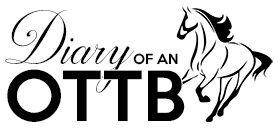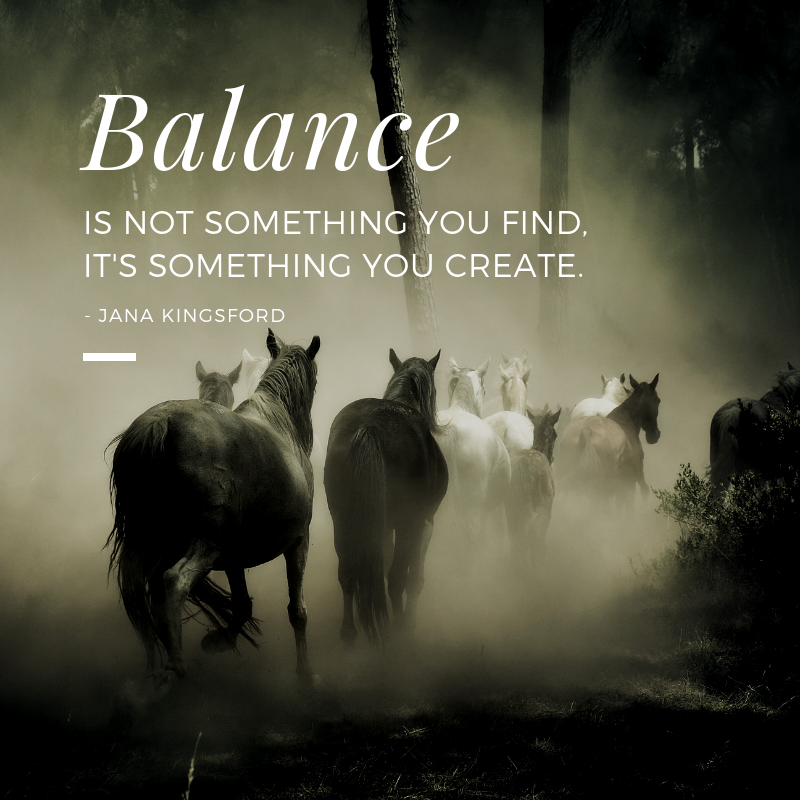Any horse person worth their salt will tell you if you ride five laps to the right it should probably be followed by five laps to the left. Why? Because we’re constantly trying to make our horses, their muscles, their movement, and their brains more balanced. Kind of like ourselves.
In a way we’re all searching for balance – in our lives, in our riding – and we hire coaches and read self-help books to help us find it. But how can we best develop balance and strength with our horses?
Let’s start with the very basics.
What does it mean for a horse to be “balanced”?
Balance can be talked about in relation to your own riding and your horse’s movement, strength, and muscle development. Your own balance and your horse’s are intertwined but not totally dependent on each other either. Your own balance affords your horse the opportunity to be balanced too. It doesn’t make it a guarantee.
To pull a quote from the Meredith Manor International Equestrian Centre, “Balance is one of those terms in the horse industry that is so misused that it’s become misunderstood.”
Balance in a horse is the even distribution of weight on all four of their feet. Simple, right? The rules of the Western Dressage Association of America judge horses on both static balance and dynamic balance. Static balance is evaluated by the horse standing still and how evenly they stand on all four feet while dynamic balance is an assessment of how the horse’s feet land during periods of movement. There’s also lateral and longitudinal balance, used to describe a horse’s apparent balance moving forward and backward (longitudinal) and side to side (lateral).
All of a sudden balance seems a lot more complicated now doesn’t it?
Dr. Jim Heird, the Vice President of the American Quarter Horse Association said in this article, “Balance is the framework that you build everything on.” This is especially true for breeders of any kind as flaws in conformation and balance can be passed on to progeny and adversely affect their career’s and overall desirability. As the article explains to be an expert on a horse’s balance goes hand in hand with being an expert on conformation.
Balance is complicated by a few factors, namely the horse’s conformation, muscle development, and individual preference. Head and neck play a huge role in relation to balance. A horse’s head and neck are incredibly heavy and those built with a longer neck may be prone to leaning forward to compensate just as a young horse with a growing hind end places more weight on their forehand. If the front never catches up completely with the back, the horse would continue carrying a little extra weight on the front and be considered to be built naturally downhill. To this extent, there are very few (if any) horses that are perfectly symmetrical, and fewer still who are capable of being perfectly balanced in every sense even with the most pristine breeding. Age, injuries, and training all factor in and that’s OK. Natural balance, and whatever unevenness that might entail, is what any rider should seek to build on and use as a starting point.
Just as humans have an individual preference and a dominant hand we use to write, horses also have a preference and dominant side they prefer moving to. This naturally creates a sort of unevenness too just as older horses can also compensate with offset weight distribution due to old injuries, arthritis, etc. A lack of balance or a continuous lack of evenness on all four legs eventually leads to uneven muscle development, which is where our training comes in handy.
building a balanced horse
There are no silver bullets in the equine game, not in any sense. There’s no tool, pattern, or training aid that will make everything perfect and produce the perfectly balanced horse and rider. What does need to happen is a lot of hard work and persistence on the human side. If that happens, the horse tends to fall into place.
Sylvia Loch is a well-respected international classical dressage instructor who wrote an entire book on the subject of balance and horses, aptly named The Balanced Horse: The Aids by Feel, Not Force. She explains in an article from Dressage Today, the concept of molding a young or inexperienced horse into moving with balance begins with getting a horse to move forward within the framework of our hands and legs, starting with rhythm and tempo.
While working towards a consistent rhythm at working gaits, like a trot or canter, a horse might extend their neck or lift it high to keep their balance. If the rider uses their hands to counter balance and the horse uses a high headset and raised neck to compensate, this is setting up for a yanking on the reins unintentionally scenario… All just for the sake of both horse and rider maintaining their balance. This is why it’s an equally important part of the equation for the rider to develop their own balance in the saddle and be proficient at all gates. When a rider is balanced, that rider can focus more on their horse’s balance during any ride.
Here’s a great explanation from Master Dressage… try not to stare at his socks, I dare you.
With a balanced rider, referring to the dressage training pyramid and working your way up is always useful resource when you need direction.
Exercises & Patterns to Help Develop Balance
Developing a balanced horse requires the same kind of training that you apply everywhere else — we seek to make the right answer easy, the wrong choice hard.
One measure of forcing the balance issue is by asking for changes of direction and transitions, whether you’re on the ground or in the saddle. A figure eight pattern is a great place to start in addressing all of these challenges. Pat Parelli does an excellent demonstration for how to accomplish this on the ground but the same principles could be applied in the saddle too.
Another excellent tool for encouraging engagement and balance are poles on the ground, often called Cavalettis. Cavalettis essentially force the idea that the task for the horse is to pick up their feet enough to clear the pole. By doing so the horse’s back is naturally forced to engage in a more balanced position. Adding poles to any combination of circles and straight lines is one simple step you can take to up the ante for yourself and your horse.
If you’re lacking some creativity with Cavalettis here’s an excellent video showing 4 possible exercises at a trot and canter.
It should go without saying that if you’ve watched the videos and exercises above impulsion, tempo, and consistent pace are crucial to developing this balance in your horse. If you’re only ever doing these exercises at a walk and never challenging or pushing that pace, your horse will never be able to advance farther than what you’re asking of them.
There’s some other easy arena riding exercises recommended by Jec Aristotle Ballou, author of the book Equine Fitness, in this Horse Journals article. Some of the exercises are similar to what are demonstrated in the videos above.
Regardless of your goals, up the ante. Push yourself first, your horse second, and most importantly, enjoy the journey!

